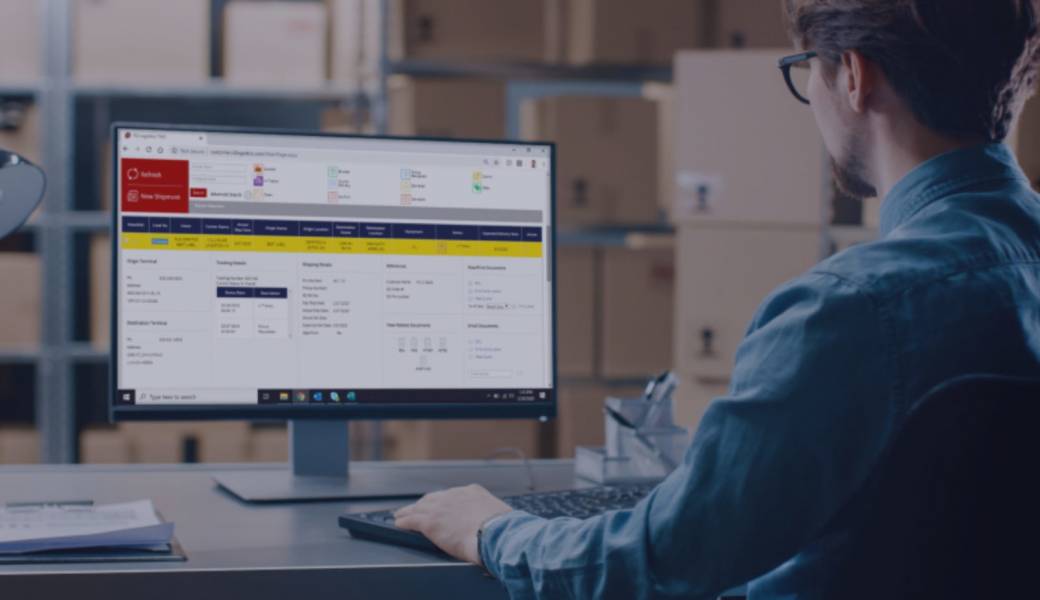What if you could get autonomous control and visibility over your supply chain’s logistical data? If you coupled control with knowledge, you may be able to design, manage, and grow your supply chain, allowing you to capitalize on profit opportunities while being adaptable enough to meet changing economic and commercial demands.
A sophisticated transportation management software, such as Rose Rocket, not only gives you unparalleled capability but also allows you to virtually simplify and automate time, labor demands, and resource-intensive operations. This article will look at the aspects to consider when selecting a TMS for your logistics company.
Design and technology
If you’ve ever purchased a TMS, you know that merely knowing whether the software offers a given functionality doesn’t indicate the feature will be a good fit for your business. You must understand how the feature works and if it is essential to your business or whether it will just add complexity and cost.
Ask for demos and walk-throughs of your scenarios to truly understand how the program can help you in:
- Easier system integration and speedier onboarding for consumers, carriers, and trading partners.
- Omni-channel capabilities that allow you to respond to consumer demands flexibly.
- An ever-expanding library of Web Services/Carrier APIs; and
- Real-time freight visibility for optimum cost savings for you and your clients.
The importance of design cannot be overstated. Functional deficiencies can always be solved with the proper system design, but a poor design will haunt you for the duration of your solution’s existence.
Long term and short term goals
Your company issues will never go away, but their complexity will most likely increase. To begin, consider your overall company goals in addition to the necessary characteristics of a TMS. What do you want your TMS to assist you in achieving in terms of your company’s goals? Do you want to enter new markets? How can you expand your non-asset component of the business?
Ask potential suppliers to assist you to think through what you need and describe how the TMS fits into that vision if they have a business-minded staff and a collaboration attitude.
Integration
This time-consuming and labor-intensive procedure exacts a price that is difficult to quantify and is sometimes neglected. In terms of time, money, and brainpower, this expense is presumably why many businesses choose to stick with their present TMS, even if it limits their development. Here is where integration comes into play. The core of any TMS should have a continually growing history of upgrades while staying highly integrative. Providers are constantly creating new and more efficient methods that provide important data updates to your company. You must be able to integrate with those sources as they expand and evolve if you do not want to miss out on efficient access to new information.
Customizable
Not only should it be simple to interface with your TMS, but it should also be customizable to your specific processes. Whether you are a shipper, broker, or carrier, you should be able to modify the system to meet your unique requirements. And we’re not talking about paying tens of thousands of dollars for minor structural modifications through the TMS supplier and a team of engineers. The primary platform must allow you to modify per your requirements easily.
The User Interface (UI)
The TMS’s user interface is the next element to consider. Is it simple to prepare for and utilize right now? What did the previous five years’ worth of UI enhancements look like? Do you have a plan for the next five years? People who use it today have different user experience expectations than those who started using it five years ago, and those who will use it in five years will have different expectations. This isn’t a problem if you expect to replace systems every five to ten years. You’ll acquire a lot of experience with demos and implementations.
Accessibility
Let’s take a moment to discuss accessibility. If your company never wishes to function outside its physical location and enjoys server maintenance, having a TMS on the server at your site may be the best solution. A server-based TMS may be accessed remotely, but it is not as clean as utilizing a cloud-based solution. A cloud-based solution should be considered if you wish to provide users with the same UI and access anywhere an internet connection is accessible. Other benefits of cloud-based solutions include ease of interaction with other systems.
Ownership costs
Be wary of TMS suppliers who deliver a low-cost solution only to force you to rely on them afterward for modifications and maintenance. Over time, you may discover that more money is flowing to a TMS vendor’s support services or pricey code updates – rather than to your bottom line.
Look beyond the TMS sticker price for a system that lets you customize it to your specific business needs without involving the vendor’s development team or hiring an engineer to create code. This reduces expenses and allows for greater response to client requests.
Conclusion
Every firm needs a solid logistics plan, and the only solution is transportation management software. A thorough understanding of the issues described above may assist you to avoid contracting with a vendor that may result in company failure.

Founder Dinis Guarda
IntelligentHQ Your New Business Network.
IntelligentHQ is a Business network and an expert source for finance, capital markets and intelligence for thousands of global business professionals, startups, and companies.
We exist at the point of intersection between technology, social media, finance and innovation.
IntelligentHQ leverages innovation and scale of social digital technology, analytics, news, and distribution to create an unparalleled, full digital medium and social business networks spectrum.
IntelligentHQ is working hard, to become a trusted, and indispensable source of business news and analytics, within financial services and its associated supply chains and ecosystems













